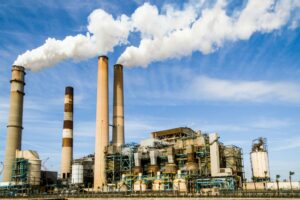
For decades, California has struggled with air pollution. However, on Feb. 7, the United States (U.S.) Environmental Protection Agency (EPA) released updated regulations to address the issue on a national scale further. The National Ambient Air Quality Standards for Particulate Matter (PM NAAQS) sets these regulations on air pollution and mandates that areas should not have more than PM2.5, soot, from 12 to nine micrograms per cubic meter area. Soot, a hazardous pollutant generated by the use of fossil fuels in various activities such as transportation, agriculture and industrial processes, poses serious health risks, including asthma and heart attacks. It is about time that soot regulations are tightened; however, it does present a more challenging time for California as most counties have been unable to meet the previous regulation standard lowering.
As a large state with many cities and farms, California primarily relies on transportation and industrial smokestacks. Unfortunately, that means California causes a lot of pollution through soot. In a county like Riverside, known for its logistics industry, this new regulation will have especially significant impacts, including higher financial costs to lower soot emissions. For instance, vehicle manufacturers, farmers and smokestacks will face increased costs because of the high prices of environmentally sustainable practices. These practices tend to be costly, like solar energy, 20,000 dollars to install and are typically not what most industries have in their pocket. The tighter EPA standards could require these industries to invest in cleaner technologies, improve combustion efficiency or implement emissions control measures such as scrubbers and filters.
Higher regulations mean California, especially Riverside County, is facing a rise in costs, particularly concerning upgrading energy efficiency and adopting environmentally friendly practices. Due to concerns about these associated costs, industries will likely challenge the proposed higher EPA soot regulations. While their stance is understandable, the measure should not be dismissed, as cleaner alternatives exist, albeit at a higher expense. Sectors such as power generation, maritime shipping and construction contribute significantly to soot pollution, but exploring cleaner solutions, despite their costliness, remains imperative.
It is crucial to recognize that the bulk of soot emissions stem from these industries and vehicles, affecting low-income people of color most significantly. They bear a disproportionate burden due to residing in areas with elevated industrial and vehicular emissions, compounded by challenges like limited healthcare access and socioeconomic barriers. This often leads to exacerbated health effects, such as increased rates of respiratory and cardiovascular diseases.
Although addressing soot pollution in California will be difficult, the benefits will be worth it. Addressing air pollution also works to alleviate the inequalities among various neighborhoods defined by their zip codes. These regulations promote equity and fairness in environmental protection efforts. Furthermore, the implications extend beyond individual communities, impacting the nation by fostering positive health outcomes and enhancing air quality. With lower soot emissions, the rate of asthma and heart attacks connected to this pollution will decline. These regulations encourage adopting better environmental practices in all sectors, hopefully leading to a healthier and more sustainable future.







